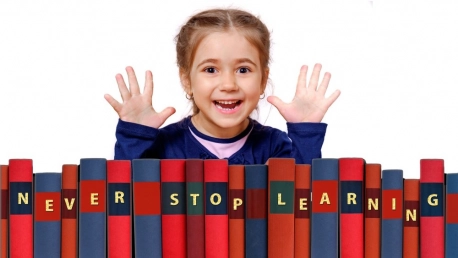The COVID-19 pandemic has seriously affected children’s lives, from education to free time and fun. The number of children suffering from anxiety has increased, and so has the number of children living in multidimensional poverty, with no access to education, healthcare, housing, nutrition, sanitation, or water. At the same time, children’s access to education, socialization, healthcare, nutrition, and protection has decreased dramatically. Both adults and children faced a rise in anxiety, depression, and isolation throughout the COVID-19 pandemic, and the most affected were individuals in vulnerable situations.
Given the fact that low educational levels were previously associated with both anxiety and depression, it seems that, in turn, access to education may have a protective effect against these problems. However, with the COVID-19 pandemic disrupting education around the world, it’s hard to tell how many children and learners were impacted by the crisis, and even harder to find the best way to recovery. Education may be the best way of protecting children and students from anxiety and depression, but what are the best ways of providing access to education during such a crisis?
Avoiding a Generational Disaster
According to UNESCO, the COVID-19 pandemic not only changed education systems around the world but, in doing so, it also created the most severe global education disruption in history. When the crisis reached its peak, more than 1.6 billion students in 190 countries were reported to have missed school, according to the data provided by UNESCO. Millions of teachers and school employees were affected by school closures and canceled classes. In March 2021, half of the world’s student population was still impacted by school closures, and 29 countries decided to keep their schools fully closed until the crisis is addressed.
While students across the world are struggling to overcome the education crisis, a new study shows that American elementary and middle school students going to start the new school year with lower rates of achievement gains in reading and math than they would have acquired during a traditional school year. The data also shows that the drop is even greater for disadvantaged children and students. In fact, the decline was at least two times greater for children attending high-poverty schools, when compared to those attending low-poverty schools. This appears to be true in most countries, with UNESCO saying the crisis has affected vulnerable and marginalized learners the most.
Why Returning to School Is Important
According to the Centers for Disease Control and Prevention (CDC), students learn more when they attend school in person, which makes the safe return to normal schooling in the fall of 2021 is a major priority. However, with the COVID-19 pandemic still far from being completely over and concerns about the Delta variant on the rise, the CDC recommends using masks and maintaining physical distancing in the near future. In fact, universal indoor masking is recommended to all teachers, educational personnel, students, and visitors to K-12 schools, regardless of their current vaccination status. Teachers agree with the new measure, with American Federation of Teachers President Randi Weingarten going as far as to praise the new CDC guidance.
Protecting health and wellbeing and preventing a future outbreak in schools may be the best way of ensuring a safe return to in-person instruction. However, children are also dealing with anxiety about returning to the classroom. Going back to school can be stressful for children and students, especially for those living in areas affected by new outbreaks. According to clinical psychologist Dr. Stephen Ross, it’s normal for students to experience some adjustment issues when returning to school. Teachers and parents should be open about children’s behavior and emotions and help them surmount the troubles.
Adaptive Solutions in Response to a Global Pandemic
The COVID-19 pandemic continues to exert pressure on governments and industries across the world, and American education is no exception to the rule. However, education might overcome the pandemic by implementing proven solutions, like masking and maintaining physical distancing, and combining them with soft skills, like empathy and good communication with children and students. While disadvantaged children and students may still experience a rise in anxiety and depression, it’s up to policymakers, teachers, and school staff to help them overcome inequalities.
“America can beat COVID. In the meantime, more vaccinations and mask-wearing in the areas most impacted by the Delta variant will enable us to avoid the kind of lockdowns, shutdowns, school closures, and disruptions we faced in 2020,” US President Joe Biden recently said. With the right solutions, America may beat not only COVID, but also one of the most severe global education crises in history.









